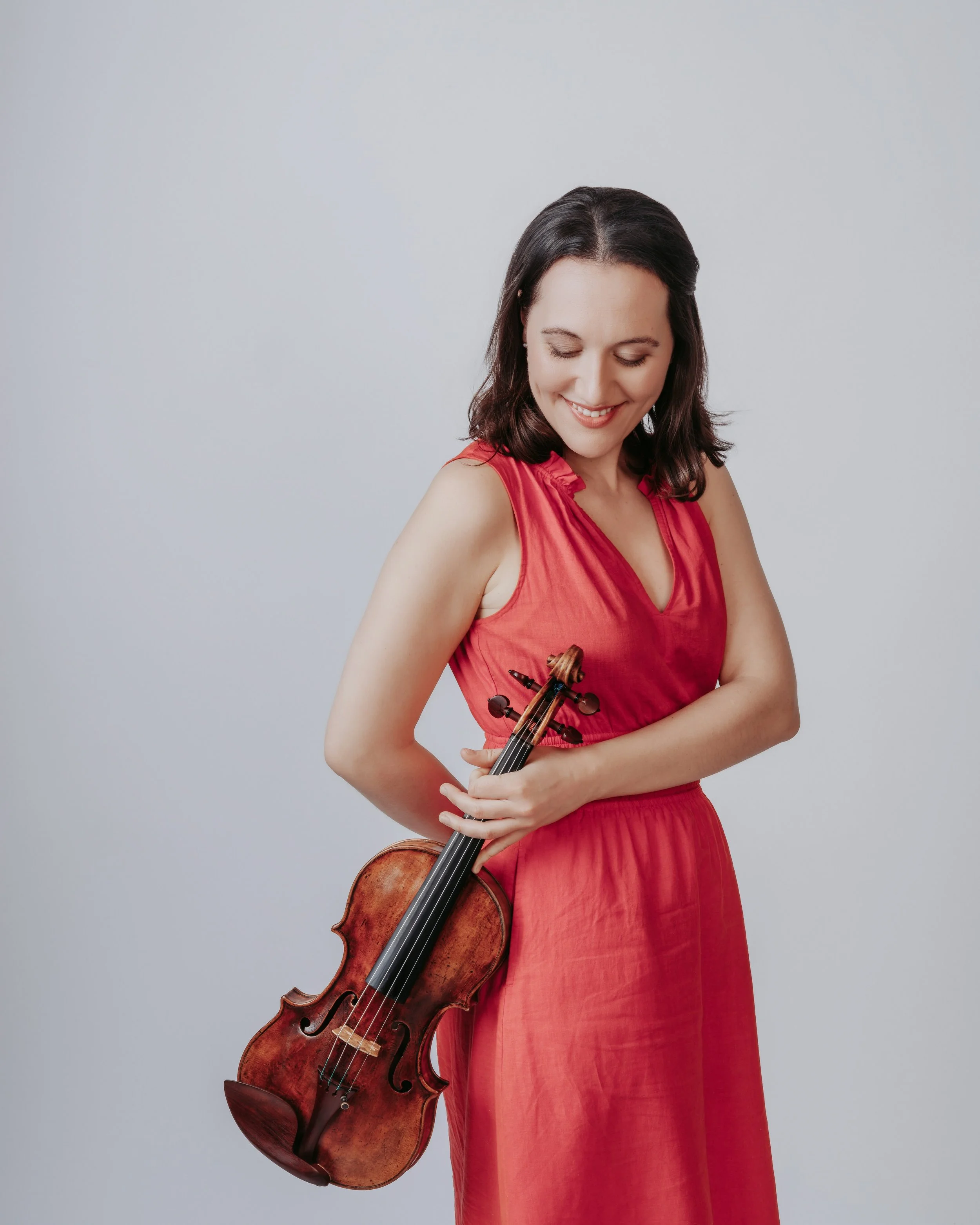Yolanda Bruno’s Dear Jeanne

Yolanda Bruno
INTERVIEW ─ On gut strings, gratitude, and the enduring generosity of Jeanne Lamon
Words by Nolan Kehler | Illustration by Dane Thibeault
ISSUE 16 | TORONTO | ENSEMBLE
Most mornings of the week, I start my day with a cup of coffee, an incandescent lamp in the corner of my radio studio, and Jeanne Lamon. Because of laws regulating the music that we can broadcast (at least 30% of the music in a given time period must be Canadian content, known colloquially as CanCon), we hear a lot of the luminaries that have moulded the national classical music scene over the past three decades. Many of these recordings were made in the 1990s to early 2000s, especially when it comes to recordings of larger ensembles such as the Montreal Symphony Orchestra or the now-defunct CBC orchestras.
In an age where large-scale works from the Western classical canon are becoming increasingly less viable in Canada, the recordings made by Jeanne Lamon and her Tafelmusik Baroque Orchestra stand as a rich legacy of performances. That legacy resonates through my studio headphones each morning as I listen to the ensemble’s sensitive and nuanced renditions of the Bach’s Brandenburg Concertos, Marin Marais’ Alcyone, and Vivaldi’s Four Seasons, their warmth welcoming in each sunrise.
Over the course of Lamon’s three-decade-plus tenure as the music director of Tafelmusik, the ensemble’s performances in turn imbued her 1759 Santo Serafin violin with its own richness and resonance—a physical archive of the ensemble’s sound and of period-informed performance echoing across centuries. Indeed, Lamon configured the instrument to serve as the most faithful vessel for these sounds, attuned to the sensibilities of musicians whose artistry predated hers by nearly three centuries.
After Lamon’s untimely passing in 2021, the Canadian classical music scene was quick to cement her legacy. Many of Tafelmusik’s performances these days take place in Jeanne Lamon Hall, part of the Trinity St. Paul’s United Church complex on Bloor Street West.
But what becomes of her musical legacy? In a very literal sense, that has passed into the hands of Yolanda Bruno. With the blessing of Lamon’s partner, cellist Christina Mahler, Lamon’s former student has picked up her Santo Serafin for a tribute called Dear Jeanne. Alongside Mahler, violinist Julia Wedman and longtime Tafelmusik harpsichordist Charlotte Nediger, one gets the sense that even though it’s not a large ensemble recording, the legacy that Lamon built is championed in a superbly humble way by those who knew her and worked with her.
L: Yolanda Bruno (by Curtis Perry); R: Jeanne Lamon
The listener feels an understated expertise from Bruno and Wedman right from the start with the opening notes of Jean-Marie Leclair’s Sonata for Two Violins in D major, op. 3, no. 6. At 415Hz (the timbre within which period-informed performances take place, a half-tone lower than modern tuning), there’s a distinct warmth to the opening movement’s simple triads, chords that resonate across the centuries. Everyone is welcomed into the celebration, and every note adds, even the dissonances that give the movement its character. Conversations abound in the allegro, the violins trading phrases that recall the spirited energy Lamon once drew from the Santo Serafin. There is space in the sonata for grief – a brief yet necessary moment of mourning in the – before the performers invite us back into celebration with the final movement. Here, Leclair’s roots as a dancer shine through, and the players perform with a distinctly Canadian energy—almost as though the sounds of Lyon are mixed with a kitchen party.
A longtime member of Toronto’s classical music fabric at institutions like the Glenn Gould School and the Toronto Symphony Orchestra, Bruno’s versatility and knowledge shine through on this recording, with ample care given to doing justice to the legacy of her former teacher. She shares a beautiful solo rendition of the largo movement from J.S. Bach’s third violin sonata - perhaps a little extra weight than one might anticipate, but the result is not unpleasant, but rather, insistent.
The crown jewel of Dear Jeanne is undoubtedly the ciaccona from Bach’s Partita no. 2 in D minor. An arrangement created by Lamon before her passing, this piece is a supreme example of the utilitarian legacy of the musical arrangements that Bach himself employed in Leipzig for his collegium gatherings. Each member of the ensemble lends themselves wholly to the performance, with special mention to be made of the syncopations brought out by Wedman and the driving nature of Mahler’s cello acting as an engine throughout, grounding and encouraging the other players. Mahler’s drive is also present on the final track, Vivaldi’s “La Follia” trio sonata, with Nediger enhancing the madness of the piece’s nature with dazzling colour, all highlighting the distinct Venetian character that is the Santo Serafin violin.
Dear Jeanne is an assurance of the continuation and stewardship of a legacy of sustainability, repertoire and humanity, and will no doubt be an excellent accompaniment to incandescently-lit, warm, coffee-soaked mornings.






